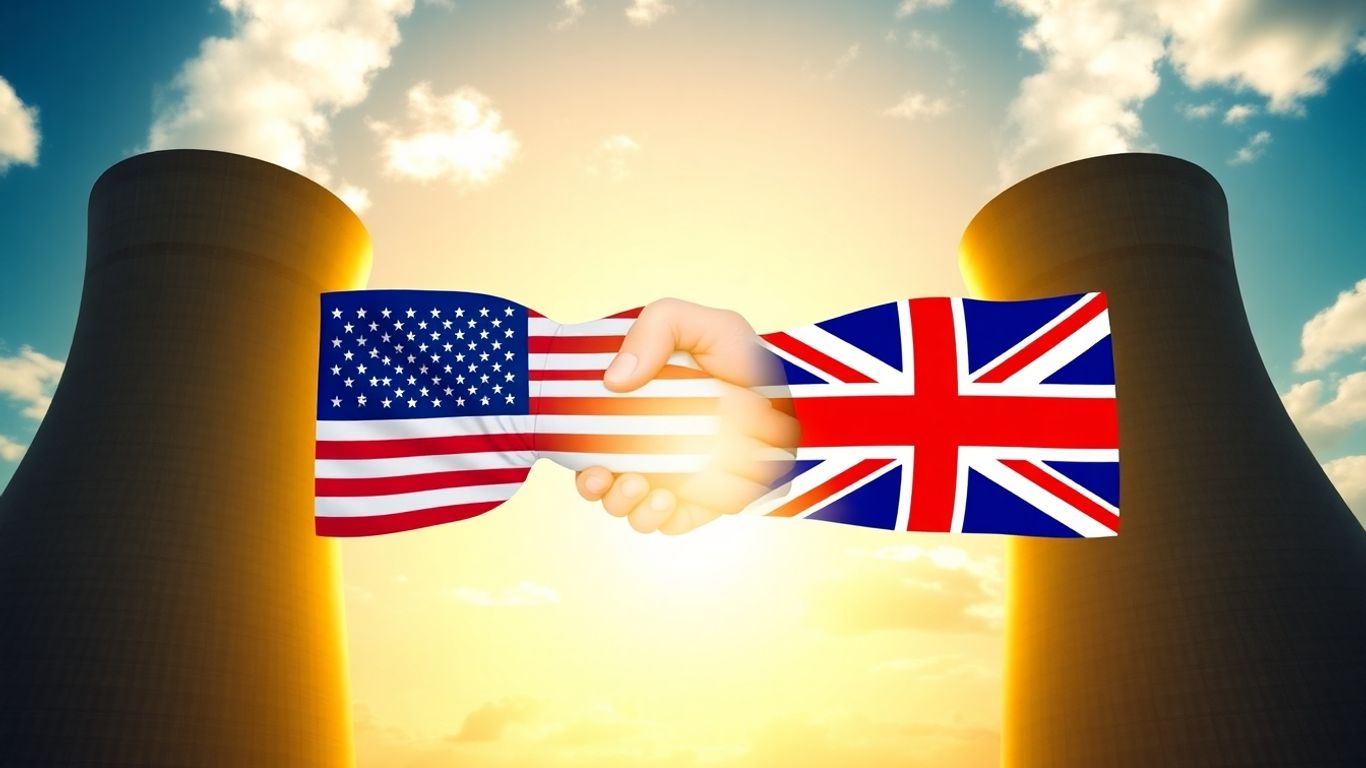In a significant move to bolster clean energy and technological advancement, the United States and the United Kingdom have inked a multi-billion-pound deal, the Atlantic Partnership for Advanced Nuclear Energy. This collaboration aims to accelerate the development and deployment of next-generation nuclear technologies, including small modular reactors (SMRs) and advanced modular reactors (AMRs), promising a new era of reliable, low-carbon power.
Key Takeaways
- A multibillion-pound deal, the Atlantic Partnership for Advanced Nuclear Energy, has been signed between the US and UK.
- The agreement focuses on speeding up the construction of new reactors, particularly SMRs and AMRs.
- Projects include powering AI data centers, creating jobs, and boosting economic growth in both nations.
- The partnership aims to streamline regulatory processes for new nuclear technologies.
Expanding Nuclear Power Capacity
The "Atlantic Partnership for Advanced Nuclear Energy" is set to drive substantial growth in nuclear power generation for both nations. A key project involves Centrica and US firm X-energy, which will develop up to 12 advanced modular reactors in Hartlepool, England. This initiative is projected to power 1.5 million homes and generate approximately 2,500 jobs, contributing an estimated £40 billion to the British economy.
Powering the Future: Data Centers and Beyond
Further underscoring the deal’s focus on innovation, US nuclear technology company Holtec, alongside France’s EDF Energy and UK firm Tritax, will develop advanced data centers powered by small modular reactors (SMRs) in Nottinghamshire. This £11 billion project highlights the growing demand for clean, reliable energy to support energy-intensive sectors like artificial intelligence.
Strengthening Transatlantic Collaboration
The partnership builds upon existing collaborations, such as the one between British firm Rolls-Royce and American company BWXT. The agreement also includes plans for new commercial projects, with the US and UK governments working to fast-track design approvals and regulatory processes. This collaborative approach aims to reduce the time it takes to bring new reactors online from up to four years to as little as two.
Economic and Environmental Impact
This landmark agreement is expected to deliver significant economic benefits, with an estimated overall program value of at least $54.4 billion (£40 billion). Beyond economic growth, the expansion of nuclear energy is seen as crucial for meeting climate targets, providing a stable, low-carbon electricity source to complement renewable energy sources and reduce reliance on fossil fuels.
The Rise of Advanced Reactor Technologies
The deal places a strong emphasis on Small Modular Reactors (SMRs) and Advanced Modular Reactors (AMRs). These technologies are designed to be smaller, more flexible, and quicker to build than traditional nuclear power stations, often with components manufactured in factories. This approach is expected to make nuclear energy more accessible and cost-effective.
Market Reaction and Future Outlook
The announcement has already had a positive impact on the stock market, with companies like Oklo Inc. (OKLO) experiencing significant gains. The renewed focus on nuclear energy reflects a global trend driven by increasing electricity demand and the urgent need to decarbonize energy systems. Both the US and UK are positioning themselves at the forefront of this nuclear renaissance, aiming to secure energy independence and lead in advanced nuclear technology.
Key Takeaways
- US and UK sign major nuclear power deal: What does it include? | Nuclear Energy News, Al Jazeera.
- US-UK Nuclear Pact Sends Oklo Stock (OKLO) to Record Highs in Clean Energy Boom, CarbonCredits.com.
- Rolls-Royce welcomes action from UK and US Governments to usher in new ‘Golden Age’ of nuclear energy |
Rolls-Royce, Rolls-Royce plc. - UK-US nuclear deal: what does it mean and will it really lead to a ‘golden age’? | Nuclear power, The Guardian.
- UK and US firms outline plans for advanced nuclear development and SMR powered data centers, Data Center Dynamics.












